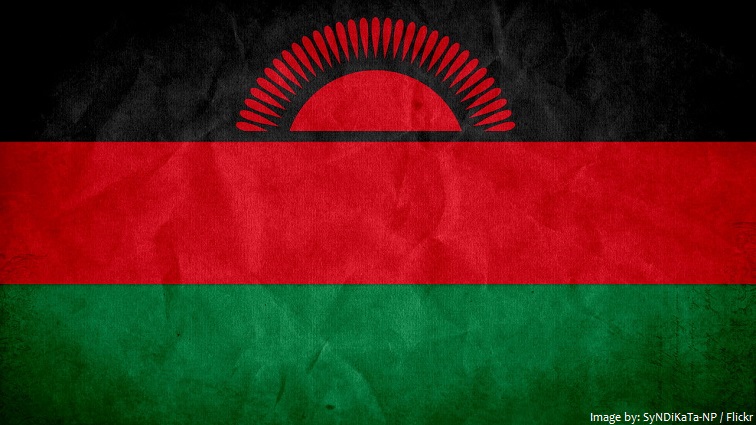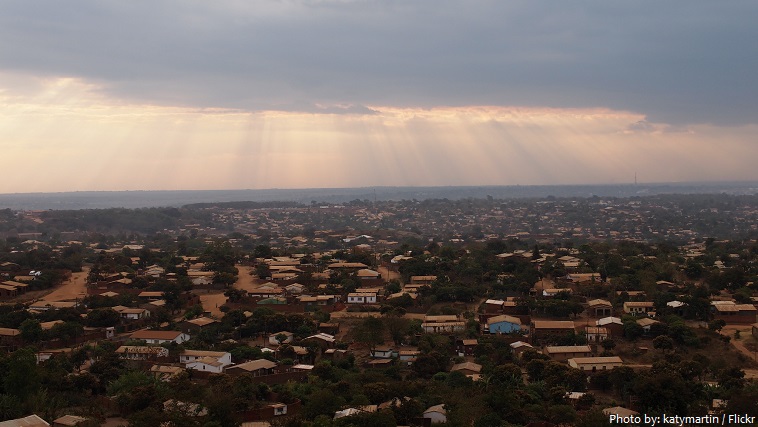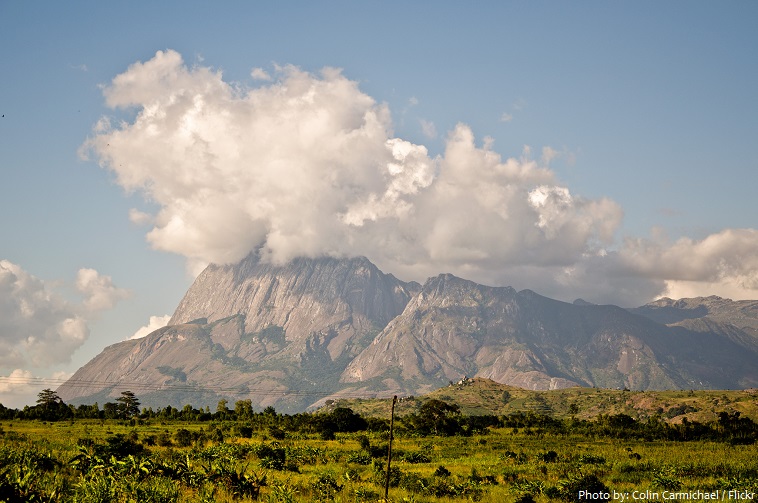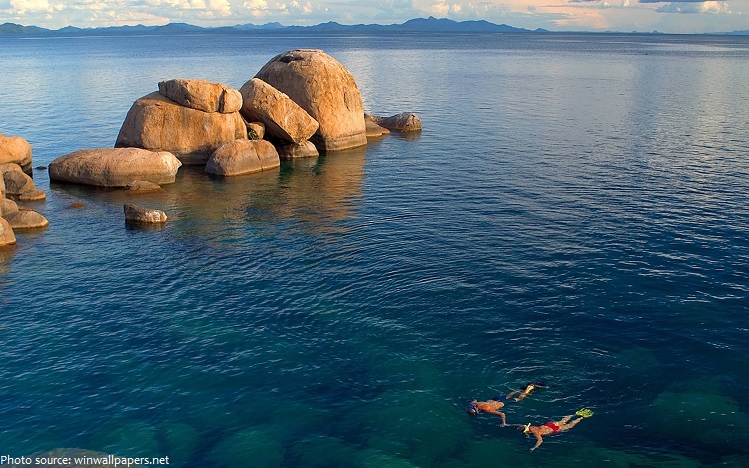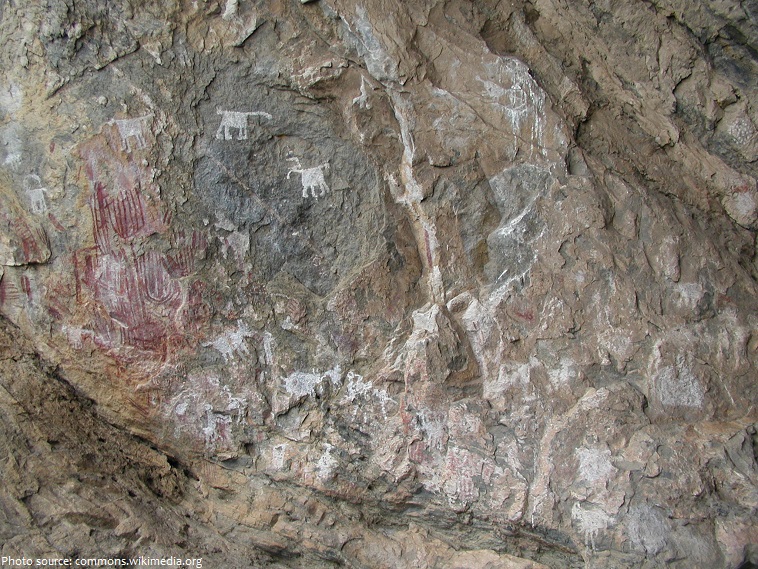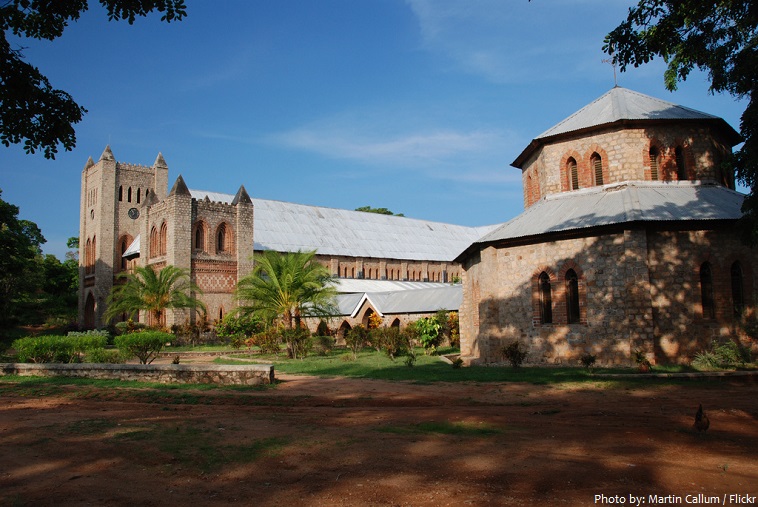Malawi is a landlocked country in southeast Africa.
The official name of the country is the Republic of Malawi.
It is bordered by Zambia to the northwest, Tanzania to the northeast, and Mozambique on the east, south and west.
Of the many languages spoken, English is the official language of Malawi while Chichewa is the
national language.
As of 1 January 2017, the population of Malawi was estimated to be 18,008,081 people.
It is the 98th largest country in the world in terms of land area with 118,484 square kilometers (45,747 square miles).
Lilongwe is the capital and largest city of Malawi. The city is located in the central region of Malawi, near the borders with Mozambique and Zambia, and it is an important economic and transportation hub for central Malawi. It is named after the Lilongwe River.
Malawi stretches about 840 kilometers (520 miles) from north to south and varies in width from 8 to 160 kilometers (5 to 100 miles).
A country endowed with spectacular highlands and extensive lakes, it occupies a narrow, curving strip of land along the East African Rift Valley.
The Mulanje Massif, also known as Mount Mulanje is a huge granite massif in southern Malawi. Its highest peak Sapitwa is the highest point in Malawi at 3,002 meters (9,849 feet) above sea level.
The network of protected areas in Liberia covers about 17% of the national territory. It is made up of 5 national parks, plus 4 wildlife reserves and other types of protected areas.
Liwonde National Park is the most accomplished wildlife spotting and safari area in all of Malawi. It is located along the courses of the Shire River. A vast reserve of flood plains and wetland swamps, of swaying grass fields and baobab groves, it’s a picture of the beautiful backcountry of East Africa. The park is home to several species of antelope (impala, kudu, waterbuck, etc.), elephants, buffalo, crocodiles, hippopotamus and many other mammals. Also there are more than 400 species of bird found in this park.
Lake Malawi accounts for more than one-fifth of the country’s total area. It is the ninth largest lake in the world and the third largest and second deepest lake in Africa. The lake is home to more species of fish than any other lake, including at least 700 species of cichlids. Lake Malawi National Park is a national park located in Malawi at the southern end of Lake Malawi. The park was inscribed as a UNESCO World Heritage Site in 1984.
Chongoni Rock Art Area is located in the Central Region of Malawi consisting of 127 sites in the forested hills of the Malawi plateau with depictions of rock art and paintings of the farmer community of the Late Stone Age and the Iron Age period. This ancient record of the cultural history is in vogue even now. In view of this cultural importance, the area was inscribed as a UNESCO World Heritage Site in 2006 under Criteria III for the rich cultural traditions of rock art and Criteria VI for its continued link to the present society.
St. Peter’s Cathedral is the Anglican Cathedral in Likoma the main town on Likoma Island. The cathedral is dedicated to Saint Peter, whose statue faces the lake. The cathedral was built by mostly stones. The foundation stone of the Cathedral was laid by Bishop Gerard Trower on 27 January 1903 and was consecrated by Bishop Thomas Cathrew Fisher on 14 November 1911. Considered a feat of engineering, materials for its construction were imported from many countries. Its stained-glass windows, crumbling masonry and sheer scale are testament to the zeal of its missionary creators’ religious conviction.
St. Michael and All Angels Church was constructed from 1888 to 1891 of brick at the Blantyre Mission in Blantyre. The church was designed, and its construction managed, by Rev. David Clement Scott, who had no formal architectural training. Design and structural elements include arches, domes, and flying buttresses. The two towers are not identical. A Moorish, domed bell tower, which contains a circular staircase, is built into the angle between the south-western tower and the wall of the south aisle. The interior consists of a Byzantine arcade of six arches.
The area of Africa now known as Malawi had a very small population of hunter-gatherers before waves of Bantu peoples began emigrating from the north around the 10th century.
The region was once part of the Maravi Empire.
In colonial times, the territory was ruled by the British, under whose control it was known first as British Central Africa and later Nyasaland.
It became part of the Federation of Rhodesia and Nyasaland. The Federation was dissolved in 1963.
In 1964 the protectorate over Nyasaland was ended and Nyasaland became an independent country under Queen Elizabeth II with the new name Malawi. Two years later it became a republic.
After independence, Malawi was ruled as a one-party state under Hastings Banda until 1994.
The economy of Malawi is predominantly agricultural, with about 90% of the population living in rural areas.
The main agricultural products of Malawi include tobacco, sugarcane, cotton, tea, corn, potatoes, sorghum, cattle and goats.
The landlocked country in south central Africa ranks among the world’s least developed countries.
Malawi’s climate is generally tropical. A rainy season runs from November to April. There is little to no rainfall throughout much of the country from May to October.
The name Malawi comes from the Maravi, an old name of the Nyanja people that inhabit the area.
The country is also nicknamed “The Warm Heart of Africa”, for the nature of its welcoming people.
Malawian cuisine is diverse, with tea and fish being popular features of the country’s cuisine.
Football is the most popular sport in Malawi, introduced there during British colonial rule.
In 2013 President Joyce Banda sold the presidential jet and a fleet of 60 luxury cars to feed the poor and grow crops to fight malnutrition.
In 1991, a hominid jawbone was discovered near Uraha village that was between 2.3 and 2.5 million years old, the oldest evidence of the genus Homo ever discovered.
